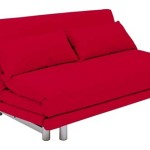Removing Red Wine Stains from a Sofa: A Comprehensive Guide
Accidental spills are an inevitable part of life, and red wine, with its vibrant color and staining potential, is a common culprit when it comes to upholstery damage. A red wine stain on a sofa can appear daunting, but prompt action and appropriate techniques can significantly increase the chances of successful removal. This article provides a detailed guide to addressing red wine stains on various types of sofa upholstery, outlining different methods and preventative measures.
Immediate Action: The First Line of Defense
The speed with which a red wine spill is addressed directly impacts the ease of stain removal. The longer the wine sits on the fabric, the deeper it penetrates the fibers, making it more difficult to extract. The initial response should focus on absorbing as much of the spilled wine as possible.
The first step involves immediately blotting the stain with a clean, white cloth or paper towels. It is crucial to blot, not rub, the stain. Rubbing can spread the wine further and force it deeper into the fibers, exacerbating the problem. Apply gentle pressure and work from the outer edges of the stain towards the center to prevent it from spreading.
Continue blotting until the cloth or paper towel no longer absorbs a significant amount of wine. Replacing the soiled cloth or paper towel frequently with a clean one is essential to avoid re-depositing the stain back onto the fabric. This process may require patience and persistence, as it can take several minutes to absorb the majority of the spilled liquid.
Once the initial blotting is complete, the next step is to dilute the remaining wine and prevent it from setting. This can be achieved with several household solutions, depending on the type of upholstery. Water is often the simplest and most readily available option. Lightly dampen the stained area with cool water, then continue blotting with a clean cloth to lift the diluted wine.
Effective Stain Removal Techniques for Different Upholstery Types
The type of upholstery material is a crucial factor in determining the most appropriate stain removal technique. Different fabrics react differently to various cleaning agents. Identifying the upholstery type is essential for preventing damage and ensuring effective stain removal. Sofa manufacturers typically attach a care label that indicates the recommended cleaning methods. These labels often use codes such as "W" (water-based cleaners can be used), "S" (solvent-based cleaners only), "WS" (water or solvent-based cleaners can be used), and "X" (professional cleaning only).
For sofas labeled "W," a water-based cleaning solution is generally safe. One effective option is a mixture of mild dish soap and water. Combine a few drops of dish soap with a cup of cool water. Apply the solution to the stain using a clean cloth, blotting gently. Avoid saturating the fabric. After blotting, rinse the area with a clean, damp cloth to remove any soap residue. Finally, blot dry with a clean, dry cloth.
Another common method for water-based upholstery involves using club soda. The carbonation in club soda can help lift the stain from the fibers. Pour club soda onto the stain, allowing it to fizz for a few minutes. Then, blot the area with a clean cloth. Repeat this process until the stain is diminished. Follow up with a clean, damp cloth to rinse the area and blot dry.
Hydrogen peroxide is a stronger cleaning agent that can be effective for removing stubborn red wine stains. However, it should be used with caution, as it can potentially bleach certain fabrics. Always test hydrogen peroxide on an inconspicuous area of the sofa before applying it to the stain. If no discoloration occurs, apply a small amount of hydrogen peroxide to the stain using a clean cloth. Blot gently and allow it to sit for a few minutes. Then, rinse the area with a clean, damp cloth and blot dry.
For sofas labeled "S," solvent-based cleaners are required. These cleaners are typically dry cleaning solutions that contain chemicals that can dissolve stains without the use of water. Follow the manufacturer's instructions carefully when using a solvent-based cleaner. Ensure adequate ventilation in the room and avoid direct contact with the skin and eyes.
For sofas labeled "WS," either water-based or solvent-based cleaners can be used. Choose the method that seems most appropriate for the type of stain and the fabric. Always test the chosen cleaner on an inconspicuous area before applying it to the stain.
For sofas labeled "X," only professional cleaning is recommended. Attempting to clean these sofas with DIY methods can potentially damage the fabric and void the warranty. Contacting a professional upholstery cleaner is the best option for removing red wine stains from these types of sofas.
Alternative Stain Removal Remedies
In addition to the aforementioned methods, several alternative remedies have been suggested for removing red wine stains from upholstery. While their effectiveness may vary, these options can be considered when other methods have failed or when specific materials are readily available.
One popular remedy involves using salt to absorb the red wine. Immediately after blotting the spill, cover the stain generously with salt. The salt will draw the wine out of the fabric as it dries. Leave the salt on the stain for several hours, or even overnight. Then, vacuum up the salt. This method is particularly effective for fresh stains.
Another option is to use baking soda. Similar to salt, baking soda can absorb the red wine. Create a paste of baking soda and water, and apply it to the stain. Allow the paste to dry completely, then vacuum it up. This method can also help neutralize odors associated with the spill.
Milk has also been suggested as a stain removal agent. Pour milk onto the stain, allowing it to soak into the fabric. Let it sit for about 30 minutes, then blot the area with a clean cloth. Rinse with a clean, damp cloth and blot dry. The proteins in milk are believed to help break down the stain molecules.
White wine is another intriguing remedy. The idea is that the white wine will dilute the red wine stain, making it easier to remove. Pour white wine onto the stain, then blot with a clean cloth. Follow up with a clean, damp cloth to rinse the area and blot dry. While this method may seem counterintuitive, it can sometimes be effective for lightening the stain.
Shaving cream, particularly white shaving cream, can also be used. Apply the shaving cream to the stain and let it sit for about 10-15 minutes. Then, blot the area with a clean cloth. Rinse with a clean, damp cloth and blot dry. The surfactants in shaving cream can help lift the stain from the fibers.
No matter which method is employed, it is crucial to test the cleaning agent on an inconspicuous area of the sofa before applying it to the entire stain. This will help prevent any potential damage or discoloration to the fabric. Also, after any cleaning attempt, always allow the sofa to dry completely. Using a fan can help speed up the drying process. Avoid using heat, as this can set the stain.
If the stain persists after multiple attempts at removal, or if the upholstery is delicate or valuable, it is advisable to consult with a professional upholstery cleaner. Professionals have the expertise and equipment to safely and effectively remove stubborn stains without damaging the fabric.

How To Easy Ways Remove Red Wine Stains From Sofas Plumbs

5 Tips For Removing Red Wine Stains Joybird

How To Remove Red Wine Stains From Clothes Carpets And Furniture

How To Get Red Wine Out Of Sofa

How To Remove Red Wine Stains Do I Get Out Of My Sofa

How To Easy Ways Remove Red Wine Stains From Sofas Plumbs

Red Wine Microfiber Sofa Loveseat Set W Optional Chair Ottoman

50580 Jayda Wine Set Burgundy Living Room Sets Sofas

How To Easy Ways Remove Red Wine Stains From Sofas Plumbs

Wine Red Sofa Couch Covers Slipcovers








